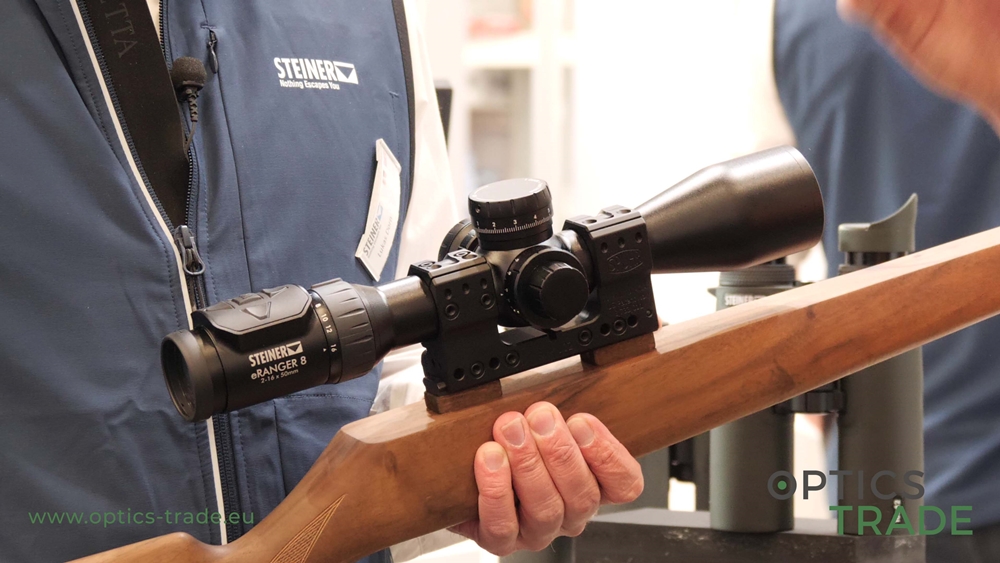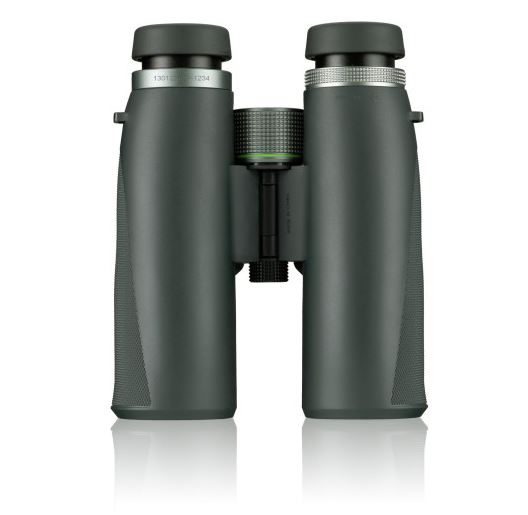Hello and welcome to another episode of Optics Trade Debates. Today’s topic of discussion is binoculars made by the German optics company Leica. For easier categorization, this video will not include binoculars with integrated laser rangefinders. We’ll save those for a separate video and for now, solely focus on classic binoculars.
Leica has a very long history of manufacturing binoculars. It all started when Ernst Leitz, the founder of Leica, began production of Binocle 6×18 back in 1907. The company changed its name from Leitz Optics to Leica (LEItz CAmera) because of the fame of Leica trade name and they’ve been making binoculars for over 110 years. At the time, binoculars were the first type of optics device used in hunting and sports. It was long later, in the 1950s, that the company began producing other optical devices such as riflescopes.
To this day, the name of the company is a synonym of quality. We know that there are many producers of sports optics today that only exist for a couple of years and use the same sourcing as their equally short-lived competitors, merely re-labelling the products. Leica, on the other hand, is a stellar example in the world of optics. The company boasts with plenty of know-how thanks to its rich history and technological prowess.
Leica is among top 3 binocular manufacturers in the world. With Leica binoculars, the user doesn’t receive just the device but also the brand history, excellent craftsmanship, and laudable customer service.
Now, let’s enumerate all Leica series of binoculars that are available as of 2018: Geovid (R, HD-R, HD-B), Noctivid, Duovid, Trinovid (BCA, HD), and Ultravid (BL/Silverline, HD Plus).
Leica produces two series of pocket binoculars. The more affordable one is called Trinovid BCA and the name of the series has been in use since 1957. There are only 2 models available: Leica Trinovid BCA 8×20 and 10×25. These binoculars are compact, small enough to be family-friendly and have rubber reinforced armouring.
The other pocket series is called Ultravid and is ideal for a wide range of outdoor activities. Bird watchers, safari travellers, and hikers are particularly fond of this line with 2 model options: Ultravid 8×20 and 10×25. The SCHOTT glass and the best high-quality Leica coatings on all glass surfaces provide for a high-quality image. The double-hinged design that matches the Trinovid series allows the user to easily fold them and store them into pockets.
All these pocket series are produced in Portugal and are known to offer exceptional optical quality considering the size of the binoculars. Note that despite some customer’s preconceived notions, Leica products made in Portugal do not lag behind Germany-made ones as their new European plant located in Porto uses state-of-the-art technology.
Moving on to the full-sized Leica binoculars. The first one is Trinovid and at the moment there are 4 models available: 8×32, 10×32, 8×42 and 10×42. These binoculars belong in the 800-1,100 euro price range. They are extremely rugged, well-made, and present the first step into the world of premium optics. Customers who intend to make plenty of use of their optical devices will be very satisfied with Leica’s durable materials. Bird watchers and hunters can especially appreciate them as entry-level binoculars that offer so much at an acceptable price.
Full-sized Ultravid binoculars are also available in multiple finishes and sport a traditional Leica design. They are most certainly not as rugged as the Trinovid series. Instead, they offer sleek style in either black leather or rubber armouring. This is a very successful line and Leica has already launched 3 generations of full-sized Ultravid binoculars.
The latest one is Ultravid HD Plus. All elements of optical construction are made of fluoride-containing glass, which ensures an outstanding performance. AquaDura® lens coating not only repels water and dirt from the surface but it also protects it from mild abrasions. The housing is made of magnesium. The internal focusing of Ultravid HD Plus models is very quick and smooth with a precise central focus wheel and a central diopter that eliminates differences in eyesight. Because the focusing mechanism is lubrication-free, it works smoothly no matter the weather conditions.
All Leica binoculars (with the exception of those that have an integrated laser rangefinder) have Schmidt/Pechan (Roof) prisms which are known to be very compact.
Ultravid is a very interesting series. We could say that it is the workforce of the whole Leica range. There are 8 models in this series: 8×32, 10×32, 7×42, 8×42, 10×42, 8×50, 10×50, and 12×50. The models 10×42 and 8×50 truly stand out thanks to their configuration of the magnification and lens diametre. These two have no match in any other brands’ binoculars – at least not on this top level. Most of these models are priced at 2,000 euros or less.
Leica pays attention to detail and their models are available in various housing material finishes such as rubber (BR), leather (BL), silver aluminium (Silverline) and in different colour variants (Colorline).
Moving on to Noctivid, the latest Leica series of binoculars. Arguably, the motivation behind these models was to create the best binoculars in the world, using the ultimate level of craftsmanship and the finest components and coatings.
We know that the battle has been going on since 2007, when Swarovski Optik produced the EL Range models, followed by Zeiss’ launch of Victory SF in 2016. These are the 3 ‘top dogs’ in the game. Indeed, the level of excellence is so great that it’s impossible to say which one is better.
Noctivid encapsulates every sought-after feature in a single device. By that, we mean everything that the customer can get in an Ultravid model (HD and fluoride-containing glass, all the lens coatings including AquaDura® and vivid colours).
The open bridge design, magnesium chassis, and non-slip rubber armour offer superb ergonomics and a great degree of protection of the high-quality optics contained within. Leica has opted to use the very best SCHOTT HT high transmission glass and their premier level coatings on both the prisms and lenses.
Optical performance was tweaked to the extreme and resulted in superb image clarity, with less chromatic aberration and an even wider field of view compared to the Ultravid series. The top-notch focusing mechanism, twist-up eyecup design and excellent, fatigue-free balance only add more value to these exemplary pieces of optical prowess.
Both the Ultravid and Noctivid series are manufactured in Germany.
The last series on the list is Duovid. This series offers two one-of-a-kind models of premium binoculars with variable magnification, 8+12×42 and 10+15×50. There are many brands that produce cheap low-quality zoom binoculars. Almost as a rule, they are quite demanding to manufacture and have several problems with synchronization of the focusing system.
Leica solved the problem by simply allowing only 2 usable magnifications (and not a continuous magnification range). As of 2018, they are the only esteemed optics brand that tried their hand in creating zoom binoculars. There are many downsides to these models. They are quite expensive, heavy and though the field of view is large, it cannot compare to the standard established by other Leica series.
In all honesty, here at Optics Trade, we believe that it is a shame that this series doesn’t sell better. Look at it this way, you get two decent-quality binoculars made by a prestigious company for the price of one. Perhaps the fact that Leica is the only well-established manufacturer of zoom binoculars is a part of the problem. It’s difficult to market a product that is so out of the norm, people are not aware of its existence. All Duovid models are made in Germany.
As far as the focusing and the field of focusing are concerned, these are very subjective matters. It’s useless to claim that the feeling of the focusing system in Ultravid models, for example, is better than the one featured in the Noctivid series. It comes down to personal taste, ultimately. But if take a look at the general quality, however, there is no denying that Leica products are of top-notch quality.
Last but not least – there are several special editions of Leica binoculars. Every so often, the company produces a limited series, with about 100 pieces made in every magnification. Models like Gold, Safari and pieces from their Hermes collaboration or Ultravid 8×32 Zagato are really collector’s items. They are also very expensive. Take a Hermes Ultravid 8×32 model that costs 10,000 euros for example.
This brings us to the end of today’s lengthy discussion. Thank you for your attention. If you have any questions left, submit them in the comment section below or contact us via email. Please like and share this video if you found it useful. Subscribe to our Youtube channel for more content. We will see you next time.
Products mentioned:
Leica Geovid HD-B




